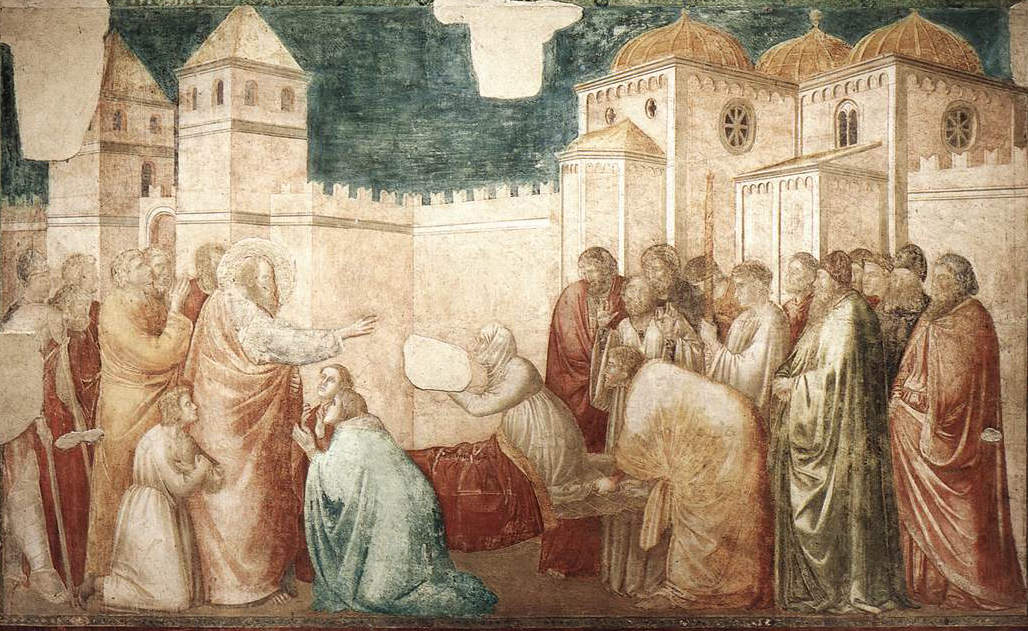What happens when your faith doesn’t seem to align with something you learn?
Like many people who grew up Christian, I was taught there are “absolute truths” about the Bible and Christianity. These informed how I viewed the world, mostly dictating what I should believe, or what kind of behavior I should or should not engage in.
Encompassed in religious institutions that practiced purity culture, one of these absolute truths asserted that all non-married Christians should be abstinent because pre-marital sex would wreak havoc on a person’s spiritual, social and physical well-being.

Mallory Challis
I never remember learning this in relation to any Bible passages (although I was taught this was definitely in the Bible), or even from the perspective of sexual education. It was just a truth my religious community accepted, in part because we feared the consequences of living a life God rejected. We even feared what would happen if we questioned it (and felt extremely uncomfortable doing so).
But when I got to college and started reading the Bible with a critical lens, I wanted some answers about these absolute truths.
Suddenly, the idea that I should believe in something wasn’t enough; If I was going to believe in something, I needed to have a robust understanding for why I believed in it. How did my experience relate to the experiences of other evangelical Christians? What is at stake in my so-called absolute truths?
When I started writing my senior thesis, I chose to research purity culture and the Bible.
I learned blind adherence is actually harmful for Christians. Purity culture was teaching us to submit our bodies to the authority of a pastor or church leader who told us sex would make us irreversibly dirty. These teachings lead to significant feelings of body shame among Christians, whether they had pre-marital sex or not.
“Many of the biblical stories I examined about sex and marriage did not portray healthy, consensual or safe scenarios either.”
And many of the biblical stories I examined about sex and marriage did not portray healthy, consensual or safe scenarios either.
In the first draft I wrote my junior year, I concluded it was not the choice to practice abstinence that caused problems for Christians, but rather our inability as church leaders to properly discuss and educate congregations on the issue. I proposed that Bible interpreters should search for ways to use the Bible to support sexual autonomy and consent rather than bodily shame or blame.
I still believe that. But what good reasons were there to make abstinence a spiritual practice?
Later, in the summer of 2022, my undergraduate advisor and I received the Reeves Research Grant at Wingate University. The grant is given to a few student-mentor pairs each year to give students research opportunities under the direction of a qualified professional in their field.
I was wrong
At the time we wrote our proposal, I knew I wanted to do a research project that focused on sexual purity because I already had written a thesis on modern evangelical purity culture. With this project, I wanted to go further and explore the roots of Christian decisions to maintain chastity, especially among women, throughout history.
After spending so much time and energy analyzing the harmful effects of how modern churches talk about sex, I was hoping to find a life-giving practice of chastity in early Christianity, one not rooted in shame. And I was very confident I would find this.
In fact, before reading any of the texts my advisor assigned to me that summer, I was sure my paper would be about how the practice we now call “sexual purity” was begun by early Christian women who were asserting agency over their bodies by calling themselves chaste.
I was sure the stories would depict them as free from the sexual shame many Christian women feel today. I was fully prepared to write a paper arguing that modern evangelical purity culture had been fabricated out of modern Christianity’s evangelical obsession with control and submission, which had no basis in the spiritual lives of Christians in antiquity choosing abstinence.
But I was wrong.
Instead, I read story after story about women forced into surrogacy, sex-slavery or physically punished for their choices to maintain chastity.
“Christian purity standards have been harmful from the very beginning.”
The women in these narratives often expressed deep and intimate relationships with God as their motivations for choosing chastity. Yet, their communities still objectified their bodies, treated them as sex objects and subjected them to violence with no regard for their wishes to remain modestly untouched. There seemed to be no spiritual, social or physical reward to the choice at all.
And I was forced to try and interpret, redeem or come to terms with the truth before me in the research: Christian purity standards have been harmful from the very beginning.
The two women I chose to write about in my final research paper were Petronilla and Drusiana, both in early Christian narratives found in the Apocryphal Acts of the Apostles.

Petronilla depicted in stained glass as a fair-skinned saint.
Petronilla
Petronilla was the child daughter of Peter.
Somewhat echoing the narrative of Bathsheba and David, an older man lusted after Petronilla while she was bathing at the communal baths with her mother. Despite rejections to sexual advances, the man persisted. The portion of the original text that included the next part of the narrative is missing, but context makes it clear she probably was a victim of sexual violence, which left her physically disabled.
As a punishment, although he can heal people in this text, Peter chooses not to heal her to protect other men from lusting after her. Nothing happens to her abuser.
In fact, Peter uses her body as a spectacle for the crowds he preaches to as a sign of both caution against the consequences of premarital sex and his apostolic power to control her healing.
The depressing moral of the story? The body others lust over is the one to blame for creating sin.

“Raising of Drusiana,” Giotto, 1320, Basilica di Santa Croce, Florence, Italy
Drusiana
The second woman had more agency, but her story is still devastating.
Drusiana was an elite, married woman who chose to take a vow of chastity as an expression of her faith in God. However, a man named Kallimachos (who was not her husband) sent her letters describing his insatiable lust for her.
Drusiana was so horrified and so pained at the thought she may have become a “source of temptation” for others, she willed herself to death. Yes, she was so repulsed at these sexual advances and afraid they may become reality she became ill and died out of shame over the mere thought of her proximity to sin.
But not even her death could save her from Kallimachos, as he attempted to rape her dead body with an accomplice while she was entombed, stopped only by a mysterious divine being that strangled him to death. However, upon the discovery of his body in her tomb, he was resurrected and almost immediately absolved of his attempted crime. And when Drusiana is resurrected, the narrator gives her magical powers and depicts her resurrecting her Kallimachos’s accomplice.
Kallimachos is never held accountable for his crime but is instead lauded for asserting his belief in God post-resurrection.
What did I learn from this one? Modesty doesn’t stop a criminal from trying to take what he wants from your body, even in death.
How to tell the truth (and why)
After reading these stories and many others, I tried desperately to redeem them.
I wrote pages upon pages of notes and journal entries arguing these stories did, in fact, show how the women of early Christianity were devoting their lives to chastity, and that this gave them sexual freedom. But deep down, I was just trying to convince myself the research in front of me was saying things it clearly did not. And I was lucky to have an advisor and mentor who was wise enough to call me out.
I remember the conversation, as I expressed to her my struggle in trying to find a cohesive thesis for my paper, when she asked me to consider my personal stake in the matter.
“What would it mean for me to admit that Christian teachings about sexual purity were rooted in such gross stories of violence?”
What would it mean for me to admit that Christian teachings about sexual purity were rooted in such gross stories of violence? If I was also going to acknowledge my own spiritual practice, it would mean I had to deconstruct and re-evaluate the basis on which I uphold and promote it.
And that was difficult.
It seemed easier to manipulate the stories in ways that made them feel redeemable. To make theological twists and turns that made the narratives fit into my own spiritual practice. I could tell a story of Christian sexual ethics that could be tied up into a pretty bow.
But that’s not truth-telling. And it is exhausting.
And the real kicker? My theological twists and turns weren’t even authentic to what I knew sexual purity meant to me and so many other Christians who favor the spiritual practice. I was compromising my ethical standards because I was afraid to let myself deconstruct the “absolute truth” I was working with.
So, I entered the weeds of my research to find out what I could learn from these stories, even if they couldn’t be theologically redeemed. Because my discomfort with the truth in front of me does not make it any less true.
I emerged with a better understanding of how to deal with texts like these, especially ones that feel icky and irredeemable.
While these texts tell us a lot about how early Christians were thinking about sexual purity in the early centuries of the church, they should not dictate how we must frame sexual ethics today. The truth of these texts is that they are informed by power structures that limit (and at times, revoke) autonomy and consent from some characters.
If we want to spiritually flourish, we can’t try to mimic them.
“Among many other spiritual practices, abstinence is one of the ways I feel connected with God.”
Admitting how gross, scary and violent these texts are, and recognizing their impact on popular modern theological frameworks, helps us better evaluate our own sexual ethics. If these devastating stories are at the root of purity culture, how do Christians form a healthy and safe understanding of sex?
Since truth-telling is also always personal, I started by admitting my truth: I feel connected with God when I am in control of and at peace with my body. Among many other spiritual practices, abstinence is one of the ways I feel connected with God. I don’t need a morally fishy ancient text to help justify God’s work in my life.
And while I’m at it, I can acknowledge the truth my research has shown: If church leaders want to help end the epidemics like body shame and sexual violence in our churches, we need to ask ourselves what these so-called “absolute truths” are really doing for our communities. Are we making spectacles out of victims like Petronilla to emphasize our own power? Do we allow people like Drusiana to have their bodily autonomy and spiritual boundaries violated because we can’t control ourselves?
From there, we can start re-constructing a more responsible theology of sexual ethics (and other truths) that is less exhausting, and more loving.
Mallory Challis is a former BNG Clemons Fellow who is a master of divinity student at Wake Forest University School of Divinity.


